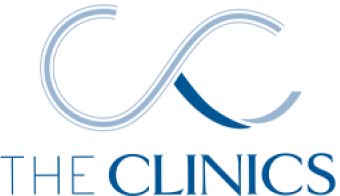
Breast Lift
A breast lift, also known as mastopexy, is a cosmetic surgery procedure designed to reposition and reshape sagging breasts.

What is Breast Lift?
A breast lift, also known as mastopexy, is a cosmetic surgery procedure designed to reposition and reshape sagging breasts. Breast lift surgery is performed when the breast loses volume, elasticity and becomes flabby, and the nipple is in a low place compared to the breast size. This can occur due to severe weight loss, frequent births, breastfeeding, fluctuations in hormones, genetics, aging, smoking and other factors.
A breast lift will not significantly change the size of the breasts. If a larger breast size is desired, breast augmentation surgery can be performed at the same time. The technique used for each individual breast lift varies depending on the following factors:
- Size and shape of the breasts
- Skin firmness and elasticity
- Degree of breast sagging (ptosis) or loose skin
- Size and position of the areolas around the nippl
Ribeiro Lift Method (Brazilian Method)
As opposed to traditional breast lift techniques where breast tissues are removed, the Brazilian method uses your own fat and tissues as FOR better projection and breast volume, along with a marked cleavage. By using the inferior pole of the breast and repositioning it, the result is a natural, full shape to the breast and gives a “push-up bra” effect without having to use implants.
Common Breast Lift Techniques
“Inverted-T” or Anchor Technique: Considered the gold standard, particularly when significant tissue removal and reshaping are required. The surgeon will create an anchor-shaped incision around the areola which continues down the center of the lower breast and along the crease.
“Lollipop” or Vertical Incision Technique: This type of incision produces a shorter scar compared to the Anchor technique. The incision is made around the areola which continues down the center of the lower breast, without the horizontal incision along the crease.
“Donut” or Circumareolar Technique: Also known as the periareolar technique, this method involves making an incision around the perimeter of the areola. It produces one short scar that can be concealed in the areola. It’s best suited for patients who require only minimal reduction in breast tissue.
FAQ’s
What are the complications of a breast lift?
Any surgery carries risk of infection, bleeding, scarring, reaction to the anesthesia and others. Complications specific to a breast lift may include asymmetry, changes in nipple sensation or numbness (temporary or permanent), difficulty breastfeeding and dissatisfaction with the results.
When should I get a breast lift?
There is no right or wrong timing to get a breast lift if sagging breasts are affecting your confidence and self-esteem. Although it’s recommended to wait until you’re done having children, some women choose to have a breast lift before any immediate plans to start a family.
Can I breastfeed after a breast lift?
Breastfeeding after breast reduction surgery may still be possible but complications can occur. Speak to your surgeon about whether a breast lift is right for you, and which techniques are best if you wish to breastfeed in the future.
Are the scars visible after a breast lift?
Yes there will be visible scars after your breast lift surgery. The type of scars will depend on the incisions, such as Anchor, Vertical or Circumareolar technique. The scars will gradually fade over time. Scar management products such as silicone sheets or creams can improve the appearance of your scars and help them heal more quickly.
Can breast lift be combined with other procedures?
Breast lift surgery can be combined with other procedures such as a breast reduction (mammoplasty), or during a “Mommy Makeover” where breast enhancement, liposuction and tummy tuck are performed at the same time.
We invite you to book a consultation with one of our expert plastic surgeons to find out if breast lift is right for you.

LipoCryo Quick Facts:
| Cost of Breast Lift | TBD |
|---|---|
| Duration of Treatment | 2-4 hours |
| Days of Social Downtime | 2-3 weeks |
| Stitches Removed | 5-7 days |
| Hospital Stay Required? | Yes, up to 24 hours |

After Surgery:
Downtime and recovery: Each person experiences the recovery period differently. Your unique healing journey will be based on the technique used, proper after-care and how quickly your body recuperates after surgery. Below are some general guidelines for what you can expect:
1-2 Days Post-Op: You will wake up from surgery with your breasts wrapped in bandages and wearing a special surgical bra to provide support and minimize swelling during your recovery.
You may have drainage tubes inserted to remove excess fluid. These will be removed after several days. At this point you will experience some pain and discomfort and your surgeon will prescribe pain medication to keep you comfortable.
You will be kept in the recovery room under observation for up to 24 hours. After that you will require someone to pick you up and drive you home, as well as assist you during this initial recovery phase which can take up to two weeks.
1 Week Post-Op: You will continue to experience some pain, bruising, swelling, and soreness. These will gradually subside over the coming weeks. Getting adequate rest is very important during this time and you should take care to avoid strenuous physical activity. You will need to continue wearing your surgical bra for the next six weeks, except when bathing.
2-4 Weeks Post-Op: You will require less and less medication, if any, for pain management. Light, non-strenuous activities may be resumed after two weeks, although avoid lifting heavy objects as you are still healing. Continue wearing your surgical bra as per your surgeon’s instructions.
4-6 Weeks Post-Op: Most pain, swelling and bruising should be resolved. You’ll feel well enough to resume regular activities such as shopping, working and exercise. At this point you may want to start thinking about using scar management products such as silicone sheets or creams. Keep in mind that it may take up to a year or longer for the scars to fully mature and lighten.
Make sure to attend all follow-up appointments diligently.
What to Expect Before Surgery:
Follow pre-operative instructions: You will be provided with detailed pre-operative instructions by your surgeon. These may include avoiding medications that promote bleeding, making sure you have all the medications you’ll need post-operatively and when to stop eating and drinking the night before.
Wear the right clothing: Choose comfortable, loose-fitting clothing such as button-up tops or dresses. Avoid wearing clothes that require raising your arms to be put on and removed.
Arrange for help: You will need someone to pick you up from the clinic or hospital and take you home. You will also require assistance during your initial recovery period, up to two weeks. You may also need help getting to your first post-operative appointment in 5-7 days.
How to Prepare for Breast Lift Surgery?
Do your research: A consultation and medical evaluation with a qualified Plastic Surgeon is the first step in preparing for a breast reduction. During your initial meeting you can learn more about the procedure, discuss your concerns, treatment objectives and whether you’re a good candidate for the surgery. You can also discuss possible risks and complications, and the recovery process.
If you decide to proceed with the surgery, the following recommendations will help you get through surgery with minimal complications and ensure the best outcome possible:

Quit Smoking
If you’re a smoker it’s best to quit smoking at least six weeks in advance. Nicotine and other chemicals in tobacco can constrict blood vessels and impair your body’s ability to heal adequately post surgery.

Lose excess weight
Losing or gaining a significant amount of weight after surgery can affect your breasts’ appearance in unexpected ways. For this reason, it’s best to achieve your ideal body weight prior to the procedure.
ELEGIBILITY Who is a Good Candidate
The ideal candidate is someone with sagging or drooping breasts, and/or nipples and areolas that are sitting below the crease or are pointing downward. A breast lift can also correct breast asymmetry when one breast is positioned lower than the other. Here are some other factors to consider:
Good overall health: A woman should be in excellent health and a non-smoker. This includes having a healthy body weight with no serious physical conditions (such as breast cancer) that could affect the outcome or be a contraindication to surgery and general anesthesia.
Breasts have reached maturity: A woman’s breasts should be fully developed before performing this type of surgery. This could mean waiting until she is in her late teens or early 20’s. Ultimately, it’s up to the surgeon’s discretion to ensure the safety of the patient.
Finished having children: It’s best to finish having your family before undergoing this type of surgery as pregnancy and breastfeeding can cause the breasts to lose volume and firmness again.
Have realistic expectations: Mastopexy can give the breasts a more lifted and youthful profile after surgery; however, individual results may vary. These can depend on your age, body type, skin quality and surgical technique used by the surgeon. A positive attitude and knowing what to expect ahead of time can ensure a satisfactory outcome.





